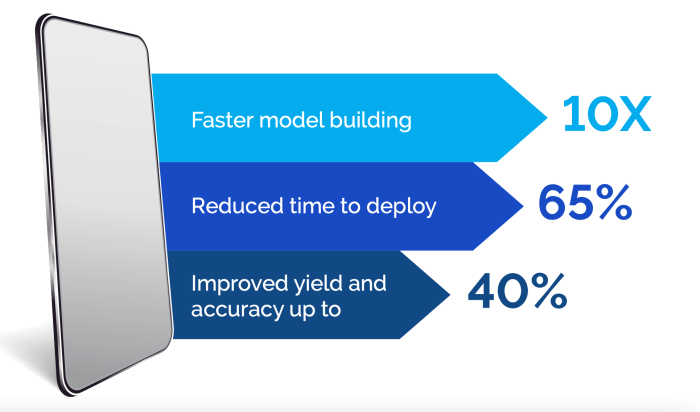Computer vision software development company – The field of computer vision is rapidly evolving, driving innovation across numerous industries. This comprehensive guide explores the world of computer vision software development companies, delving into their roles, the technologies they employ, and the impact they have on our world. We’ll cover everything from the intricacies of image processing and object recognition to the ethical considerations and future trends shaping this exciting sector.
What is Computer Vision Software Development?: Computer Vision Software Development Company
Computer vision software development involves creating algorithms and systems that enable computers to “see” and interpret images and videos in a way similar to humans. This goes beyond simple image recognition; it encompasses tasks like object detection, image segmentation, facial recognition, optical character recognition (OCR), and 3D reconstruction. These capabilities are achieved through sophisticated techniques leveraging artificial intelligence (AI), machine learning (ML), and deep learning (DL).

Source: megalabs.ai
Key Technologies Used in Computer Vision Development
- Artificial Intelligence (AI): The overarching framework that enables computers to mimic human intelligence, including visual perception.
- Machine Learning (ML): Algorithms that allow systems to learn from data without explicit programming, crucial for training computer vision models.
- Deep Learning (DL): A subset of ML utilizing artificial neural networks with multiple layers to extract complex features from images and videos. Convolutional Neural Networks (CNNs) are particularly prevalent in computer vision.
- Image Processing Techniques: Methods for enhancing, filtering, and manipulating images to improve the accuracy of subsequent analysis, including techniques like edge detection, filtering, and image restoration.
- Computer Vision Libraries and Frameworks: Tools like OpenCV, TensorFlow, PyTorch, and scikit-image provide pre-built functions and models, accelerating development.
The Role of Computer Vision Software Development Companies
Computer vision software development companies play a crucial role in translating cutting-edge research into practical applications. They design, develop, and deploy computer vision solutions tailored to specific client needs across various sectors. This involves:
- Needs Assessment and Solution Design: Understanding client requirements and designing custom computer vision systems.
- Data Acquisition and Annotation: Gathering and labeling large datasets of images and videos, a critical step in training accurate models.
- Model Development and Training: Building, training, and optimizing computer vision models using appropriate algorithms and frameworks.
- Software Integration and Deployment: Integrating computer vision solutions into existing systems and deploying them on various platforms (cloud, edge devices).
- Testing and Maintenance: Rigorous testing and ongoing maintenance to ensure accuracy, reliability, and performance.
Industries Leveraging Computer Vision
The applications of computer vision are vast and continue to expand. Here are some key industries benefiting from this technology:
1. Healthcare
- Medical Image Analysis: Automated detection of diseases like cancer from medical scans (X-rays, CT scans, MRIs).
- Robotic Surgery: Guiding surgical robots with enhanced precision and accuracy.
- Patient Monitoring: Real-time analysis of patient vital signs and behavior.
2. Automotive, Computer vision software development company
- Autonomous Vehicles: Enabling self-driving cars to perceive their surroundings and navigate safely.
- Advanced Driver-Assistance Systems (ADAS): Features like lane keeping assist, adaptive cruise control, and automatic emergency braking.
- Parking Assistance: Automated parking systems using computer vision to identify and navigate parking spaces.
3. Retail
- Customer Behavior Analysis: Understanding customer preferences and shopping patterns through video analytics.
- Inventory Management: Automated stock tracking and shelf monitoring.
- Self-Checkout Systems: Computer vision-based systems for automated checkout processes.
4. Security and Surveillance
- Facial Recognition: Identifying individuals for security purposes (access control, law enforcement).
- Object Detection: Detecting suspicious activities or objects in real-time.
- Anomaly Detection: Identifying unusual events or behaviors that may indicate a security threat.
5. Manufacturing
- Quality Control: Automated inspection of products for defects.
- Predictive Maintenance: Predicting equipment failures based on visual inspection of machinery.
- Robotics: Guiding industrial robots for tasks like assembly and packaging.
Choosing a Computer Vision Software Development Company
Selecting the right partner for your computer vision project is crucial. Consider these factors:
- Experience and Expertise: Look for companies with a proven track record in your specific industry and application area.
- Technical Capabilities: Assess their proficiency in relevant technologies (deep learning, specific frameworks).
- Data Handling and Security: Ensure they have robust data handling and security protocols in place.
- Communication and Collaboration: Choose a company that fosters clear and effective communication throughout the project lifecycle.
- Project Management: Evaluate their project management capabilities to ensure timely delivery and adherence to budget.
Ethical Considerations in Computer Vision
The development and deployment of computer vision systems raise important ethical considerations, including:
- Bias and Fairness: Addressing potential biases in training data that can lead to discriminatory outcomes.
- Privacy and Surveillance: Protecting individual privacy and ensuring responsible use of surveillance technologies.
- Transparency and Explainability: Developing models that are transparent and whose decisions can be explained.
- Accountability and Responsibility: Establishing clear lines of accountability for the actions of computer vision systems.
Future Trends in Computer Vision
The future of computer vision is bright, with ongoing advancements in:
- Edge Computing: Processing images and videos directly on edge devices (e.g., smartphones, IoT devices) for faster processing and reduced latency.
- Explainable AI (XAI): Developing models that provide insights into their decision-making processes.
- 3D Computer Vision: Capturing and analyzing 3D information from images and videos for more comprehensive scene understanding.
- Synthetic Data Generation: Using synthetic data to augment real-world datasets and improve model training.
Frequently Asked Questions (FAQ)
- Q: What is the difference between computer vision and image processing?
A: Image processing focuses on manipulating images to enhance their quality or extract features. Computer vision goes further, using these processed images to understand and interpret the content, enabling decision-making. - Q: How much does it cost to develop a computer vision application?
A: The cost varies significantly based on project complexity, data requirements, and the chosen development company. It’s best to get custom quotes from multiple vendors. - Q: What are some popular computer vision libraries?
A: OpenCV, TensorFlow, PyTorch, and scikit-image are widely used libraries for computer vision development. - Q: What are the ethical implications of facial recognition technology?
A: Facial recognition raises concerns about privacy, potential for bias, and misuse for surveillance and discriminatory purposes. - Q: How can I find a reputable computer vision software development company?
A: Research companies online, check their portfolio and client testimonials, and request detailed proposals and references.
References
Call to Action
Ready to leverage the power of computer vision for your business? Contact us today to discuss your project requirements and explore how we can help you develop innovative and effective computer vision solutions.
Answers to Common Questions
What are the typical services offered by a computer vision software development company?
Services commonly include custom software development, image and video analysis, object detection and recognition, image classification, 3D reconstruction, and consulting services.

Source: landing.ai
What industries benefit most from computer vision software?
Many industries benefit, including automotive (autonomous vehicles), healthcare (medical imaging analysis), manufacturing (quality control), retail (customer behavior analysis), and security (surveillance systems).
What programming languages are commonly used in computer vision development?
Python is a dominant language, often used with libraries like TensorFlow, PyTorch, and OpenCV. Other languages like C++ and Java are also employed for specific tasks.
How much does it cost to develop a computer vision application?
Costs vary greatly depending on project complexity, features, data requirements, and the development team’s hourly rates. It’s best to get customized quotes from different companies.
